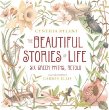I love this book. I know you’re supposed to say that sort of thing about books that have won the National Book Award, but I am not one to love a book just because someone smacked an award on it (ask me sometime how I feel about What I Saw And How I Lied). This one earned my love. I want everyone to read it. I want to press it into the hands of strangers on the street. On Tuesday I told the school psychologist to read it, by Thursday she’d cornered me in the office to tell me it was incredible.
Caitlin has Asperger’s Syndrome. Her brother Devon who is her advocate, her only friend, has just been shot and killed in a school shooting. Coping with a tragedy on that scale would be difficult for anyone, but Caitlin has to process it in her own way and without the only person she thinks could help her through.
Erskine’s description of Caitlin’s world is both heart-breaking and heartwarming. We are there with Caitlin seeing the world through her eyes: the overwhelming nature of the noise and light and motion that is recess, the way sucking her sleeve is comforting, the trick she does with her eyes to make things go blurry when the world is too sharp and bright, the aggravation she experiences when people’s emotions do not match the facial expressions she’s trained herself to recognize from a chart, the comforting nature of books which she knows will not change.
Caitlin finds her own way toward closure, a concept she’s heard about and decided she desperately needs. As she tries to get there Caitlin has many setbacks but in the end she is not the only one she helps through this tragedy.
Despite its mature theme, I would absolutely give this to any child who I felt could emotionally handle the topic. School shootings are real and terrifying. Mockingbird does not make light of that, but the book is not focused on the tragedy, rather the healing that must occur in its aftermath. My recommendation would be for readers in grades 5 and up. Although the main character is in elementary school, this book has enough depth and interest that I believe older students would enjoy it as well. In addition to Caitlin’s story, Erskine has woven references to To Kill a Mockingbird throughout.
Sex, Nudity, Dating – None.
Profanity – None.
Death, Violence and Gore – Devon has died in a school shooting. The police caught his shooter and killed him. We learn that they tried to save Devon at the hospital but that they couldn’t because his heart was hanging out and they couldn’t close his chest up. Caitlin flashes back to at the hospital where the doctors tell her father that they tried to fix Devon’s heart but there was nothing left. One shooter is in custody but smiles and gives a thumbs up as he’s taken to the courthouse. The news reports on another school shooting, one in Maryland and warns that the footage they will show contains some very disturbing content. An older child pushes a child with autism. Caitlin and Devon’s mother died of cancer when they were younger.
Drugs, Alcohol and Smoking – None.
Frightening or Intense Things – Devon was cremated which means burned up into ashes. Caitlin engages in some speculation about where the burned up bits might be. Caitlin has Tantrum Rage Meltdowns, in one she has cut herself and tries to erase the blood from the wood and will not stop. Caitlin tells about how she and Devon watched Bambi and Devon thought that Bambi’s mother wouldn’t die and Caitlin ended up shouting at him that she was dead and never coming back. They talk about the content of To Kill a Mockingbird including how the father had to kill a dog. At a later point in the book Caitlin bloodies her finger as she tried repeatedly to do something that is difficult.









